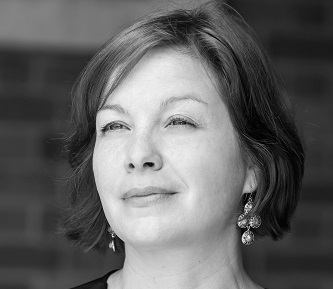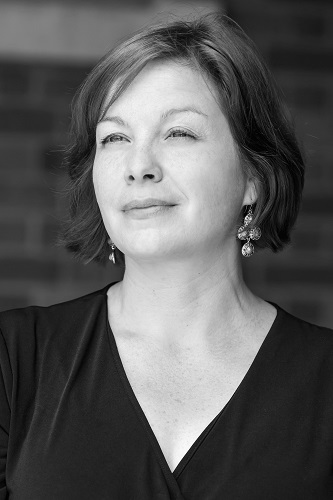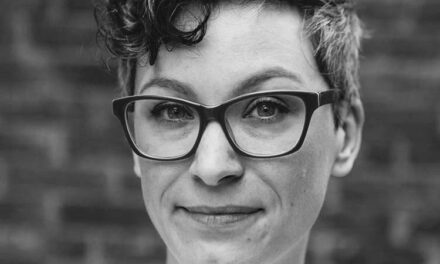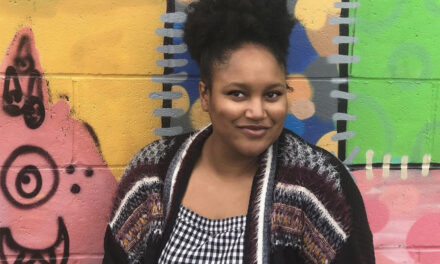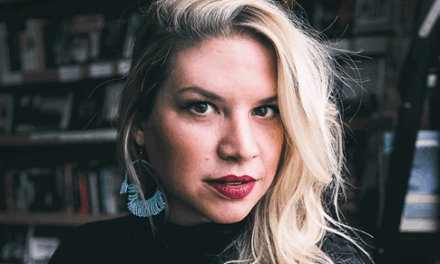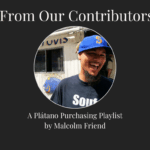Managing Editor Lisa Ampleman: These two stunning microessays by Sonja Livingston (who served as guest literary nonfiction editor for our Issue 16.1) grapple with the place of women in history, specifically those woven into the speaker’s family: an enslaved Native ancestor and a prehistoric “greatest grandmother.” The latter, a skeleton displayed in Chicago’s Field Museum, is brought to life, “dreaming of blue foxes and arctic hares,” through Livingston’s keen portraiture, and the syntactical rhythms of “Easter” mimic both the movement of water and the repetition-with-difference of inheritance from generation to generation.
Magdalene
I. In the age of the reindeer, in the place where horses are carved, her body is set into the ground. Hands under head, curled onto one side, she holds her position until 1911 when a worker strikes the limestone with a pickax, shattering her skull. Dead thirteen thousand years, and still a woman’s body is subject to the fits of man.
They piece her together. A puzzle of cheekbone, mandible, and teeth. The blades of her pelvis are shallow and wide, women’s bones, open to what comes. Magdalenian Girl, they call her at first. Magdalenian Woman and Cap Blanc Lady when they realize she’s grown. Also in the rock shelter: Tools fashioned of antler. A frieze rubbed with red ocher over the back wall. Carvings of bison and reindeer, the hooves and horns of animals we can no longer make out, a fleet of horses that look as if they’re flying through the face of the rock.
II. After purchasing her body in New York, Henry Field packs Magdalene into his suitcase and whisks her to Chicago on a westbound train. It’s 1926. Afternoon light fills the silver hull. Thousands flock to see her when she’s displayed. A fine specimen. The most complete Paleolithic skeleton America has ever seen. She’s still there. One floor up from the food court, past meteorites and stone lions, near the Hall of Jades and combs made of bone. Magdalene’s been stowed at the Field Museum so long we’ve come think of it as her home.
But what is one century compared to a hundred? Even as they crack apart her casings and stare into her open mouth, Magdalene is dreaming of blue foxes and arctic hares. She’s replaying the chisel of needle and the following of herds. She’s off scraping hides, bearing children and packing up when the hard winds come. She’s dreaming of the cache of berries she found last summer and a dozen red horses flying over her head.
III. They’ve made a plaster cast of her bones and returned a replica to her nest at Cap Blanc. There’s a 3D model of her skull. You can print a copy and hold it in your hand. A forensic artist has reconstructed her face, coiled her hair into a crown of beads, making her look like a French movie star. I suppose we’re all trying to make something of Magdalene.
I am making her into my greatest grandmother. I am making her into an ivory bowl that holds the day the snow melts in the Vézère Valley and she knows it’s time to go. I’m staining her fingers with ocher, watching her put the finishing touches on the horses before leaving behind the enormity of the frieze. I’m making her into the moment she steps out from under the limestone overhang—the exact second she follows the path bordered with wildflowers and takes in the vast expanse of all that has not yet been parsed, studied, or named.
Easter
enslaved ancestor, seventeenth century, Orange County, New York
I’ve decided to call you Easter. Because the man who bought you was born in the hull of a ship. Because his skin is so white the blue comes through. Because he swears to God he can still hear the moan of boat and rocking of the sea. Because his Ulster voice is two parts gravel, one part honey, one part salt. Because he mixes up words like love and possession and rocks your body like waves. Because history does not record your name. Because I’ll never know how you feel when the sound of his boots lands at your door. Because a blue wave is still a wave. Because no one can say whether the man born between two worlds buys you a cabin with a proper bed in the place near Wallkill where the freed men and women live. Because they call the place the Honey-Pot for the sweetness of the water there. Because your stomach has begun to swell. Because a drop is an ocean in 1773. Because—grandmother of my grandmothers’ ever-unfolding green branch—your son will grow tall and handsome and pass. Because his daughter will make her home at Ticonderoga, call herself a Mohawk, and birth twenty-one children near that crumbling fort. Because twenty-one is more than the number of men in a squad, squads in a platoon, and colonies in New England. Because the eleventh of her babies is a boy called Charles Thorne. Because his body is a basket woven with strands of your DNA. Because he carries you to Julian who carries you to Sylvia who carries you to Anna Mae who drinks so hard she almost loses you but survives long enough to carry you to my mother, Louise, who carries you my way. Because there you are on the seventh chromosome, a speck of crimson breaking up the blue. Because of the movement of water, the hard clean wash of this old world and the motions of your life are written in disappearing ink. Because when I face south from Ticonderoga, I feel most at home. Because it’s spring when I think of you. Because sometimes in April the cold is broken and the abandoned lilacs near Lake Champlain awaken to ten thousand purpling buds.
Sonja Livingston is the author of four books of nonfiction, including Ghostbread (University of Georgia Press, 2009), which won an AWP Book Prize and has been widely adopted for classroom use. Other honors include a NYFA Fellowship, an Iowa Review Award, and a VanderMey Nonfiction Prize. Sonja teaches creative writing at Virginia Commonwealth University.
For more miCRo pieces, CLICK HERE

